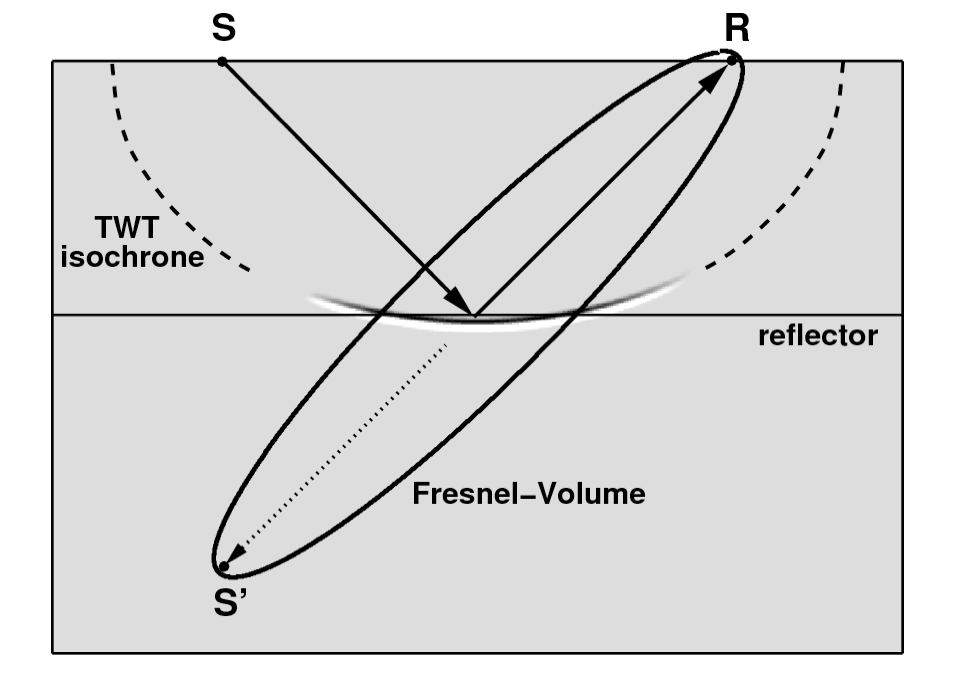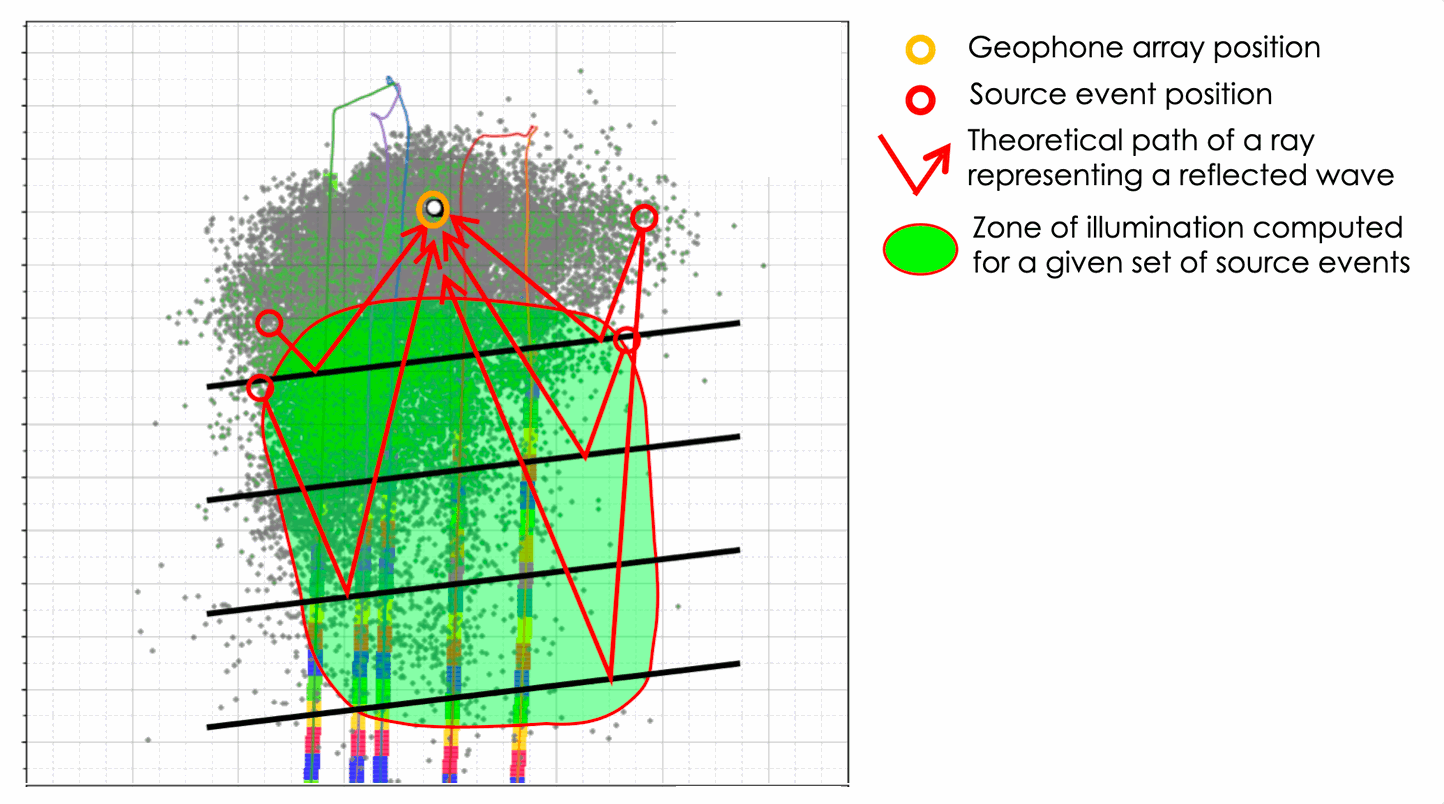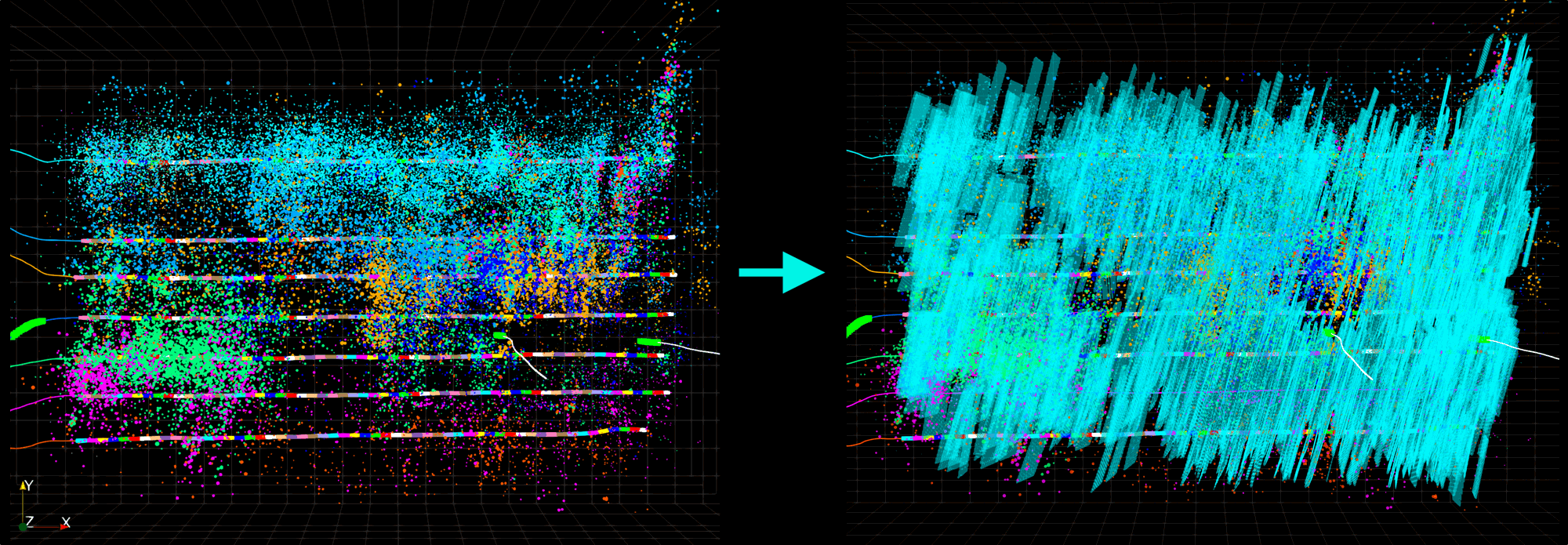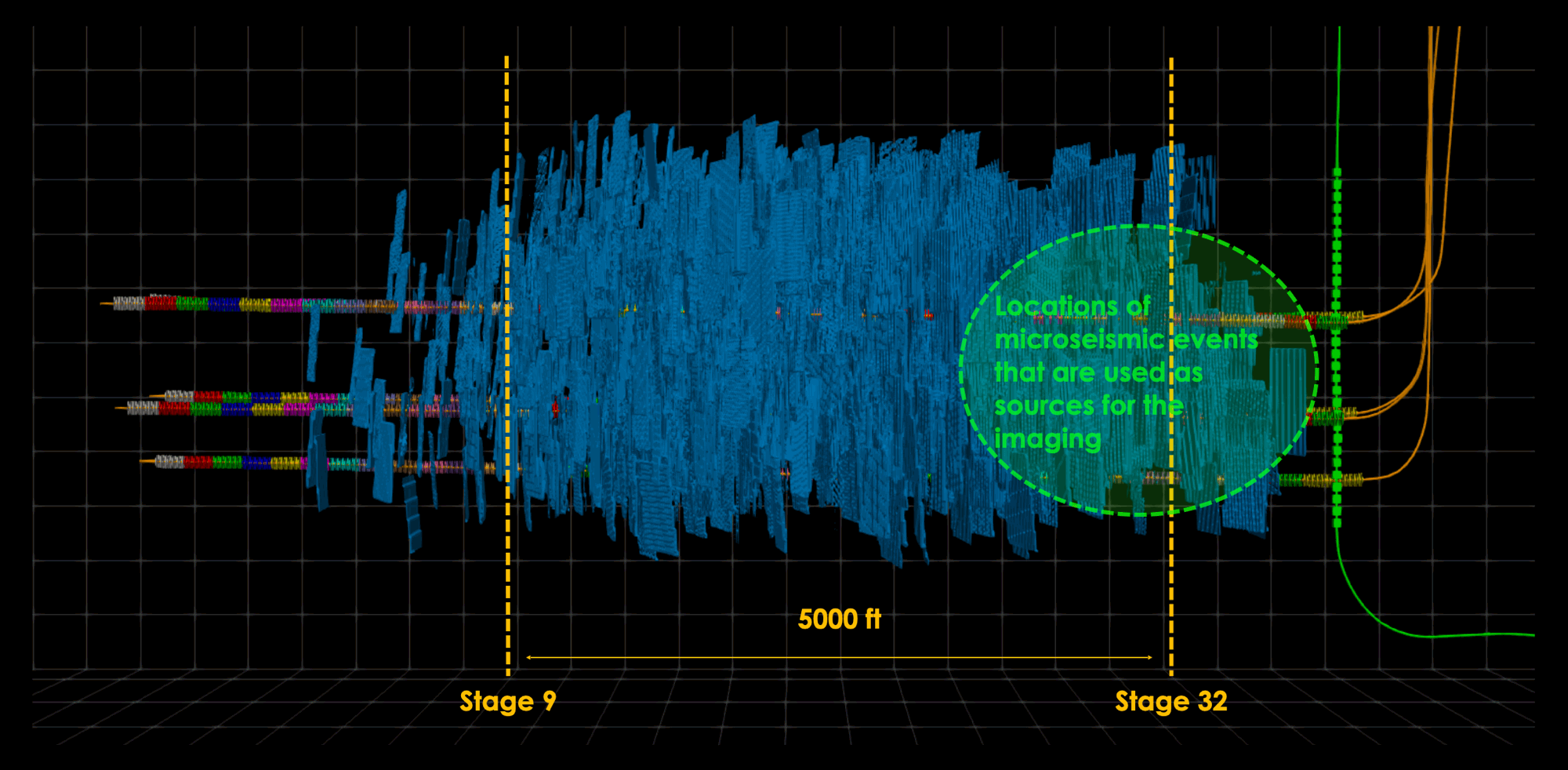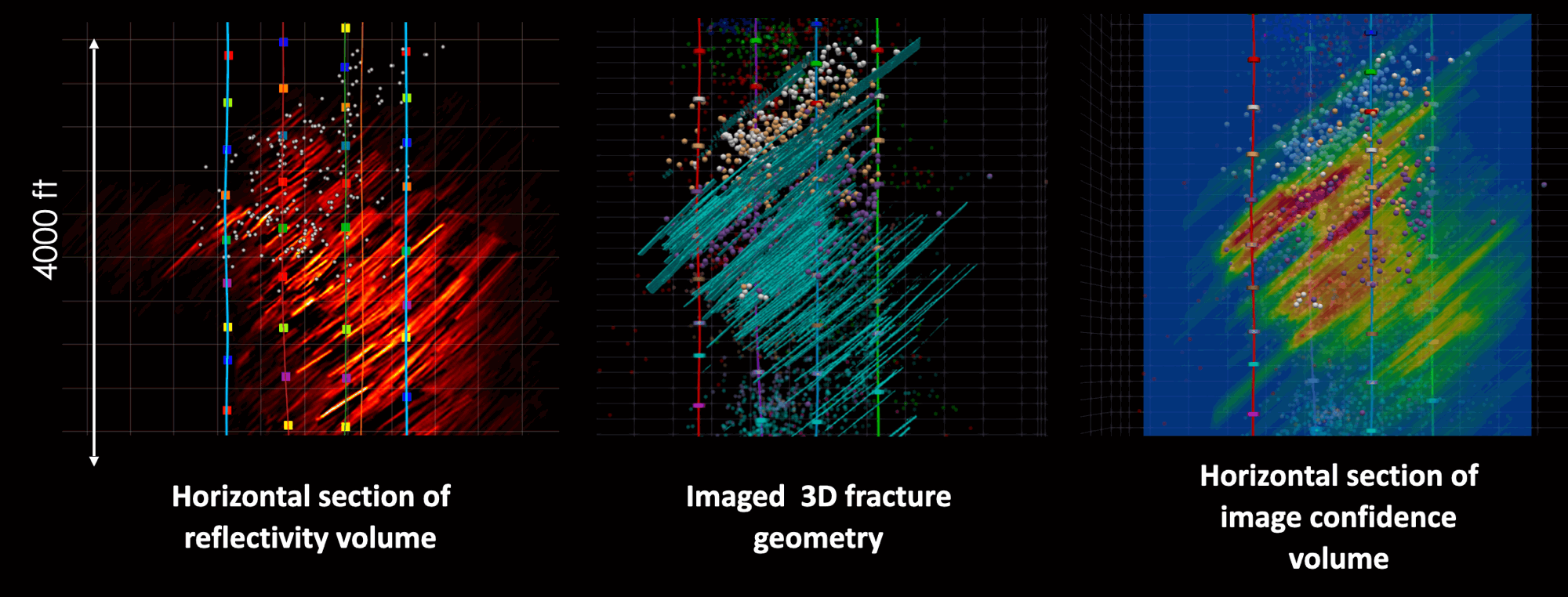Method Overview
Method uses microseismic events as sources for reflection imaging to image newly created and pre-existing fractures.The algorithm is designed to scan microseismic waveform data and extract a high number of potential reflections. Multiple reflections created by the same fracture network recorded by a fixed array of sensors which helps to overcome the uncertainty of individual event localizations.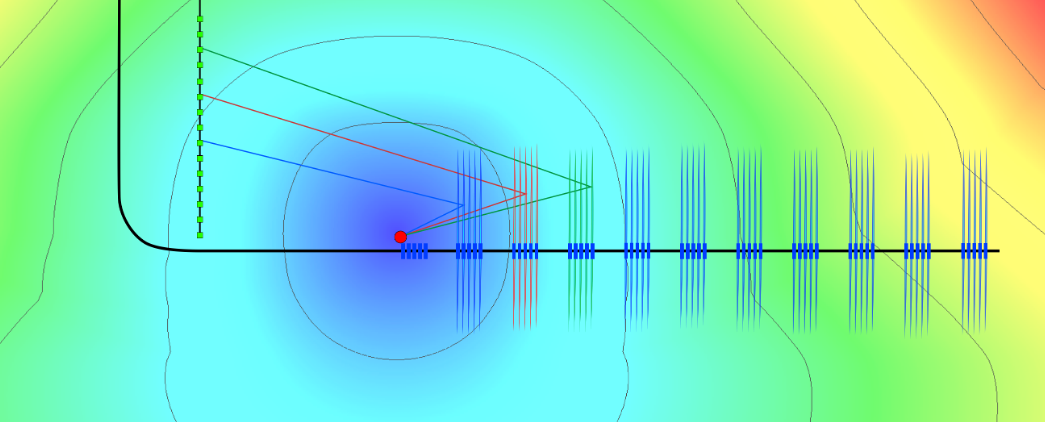
Advantages of Microseismic Events as Sources
•Large number of source events
•Sources are located within the area of interest
•High frequency signals → high resolution of the final image

